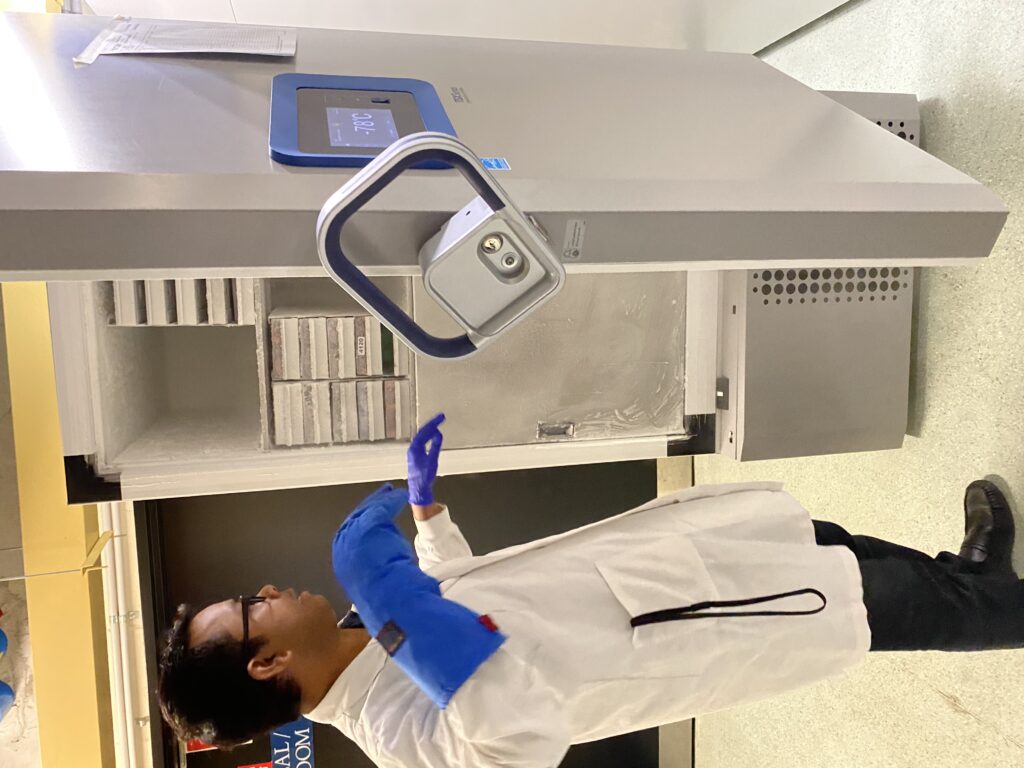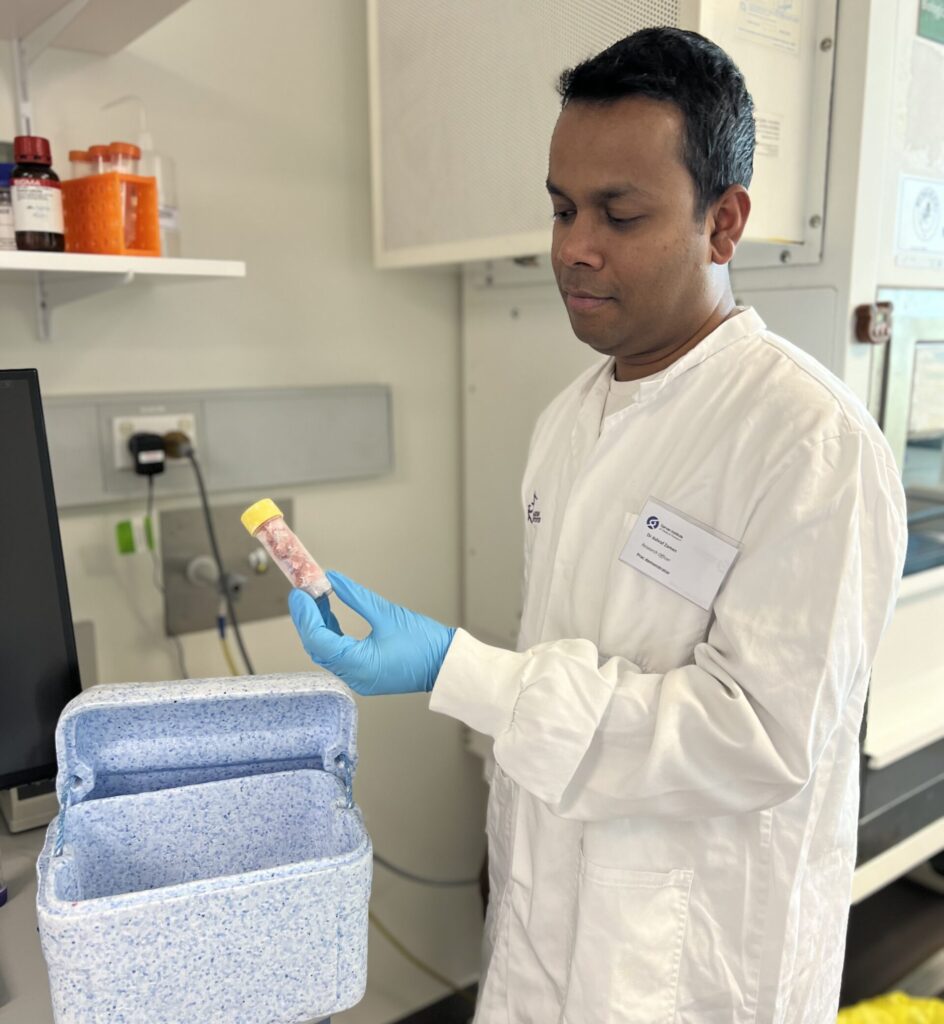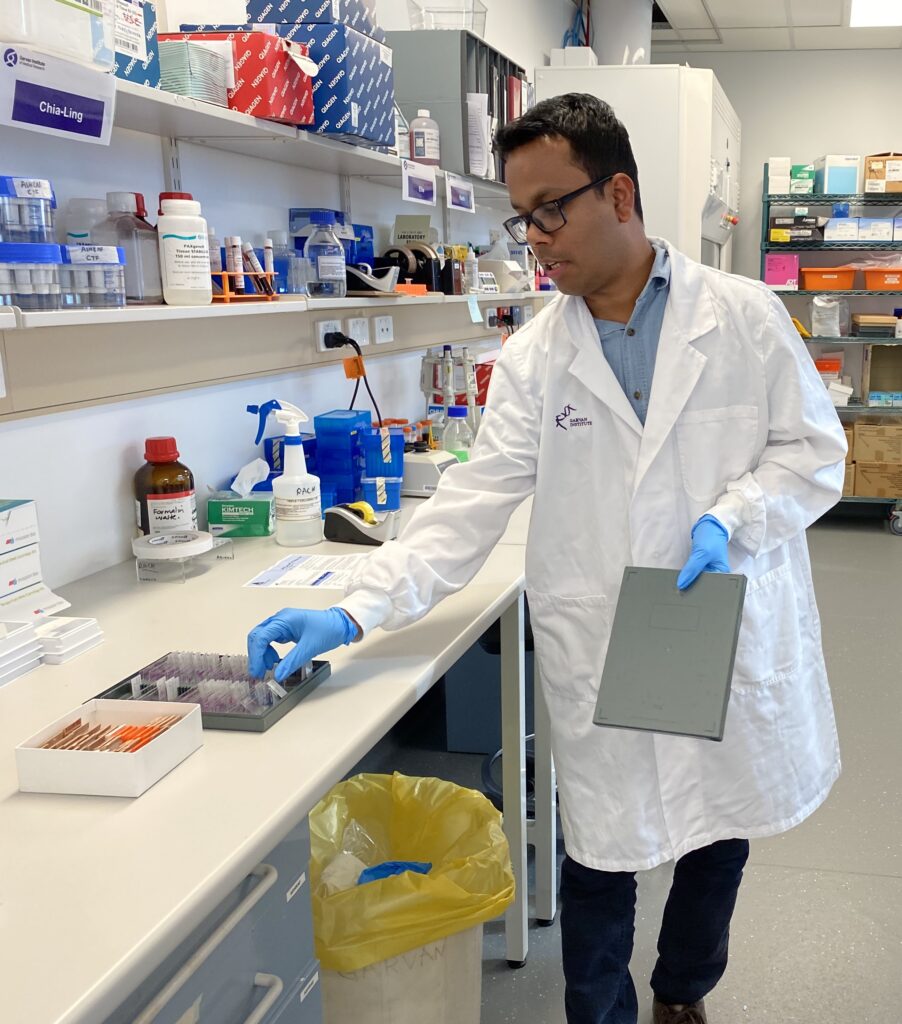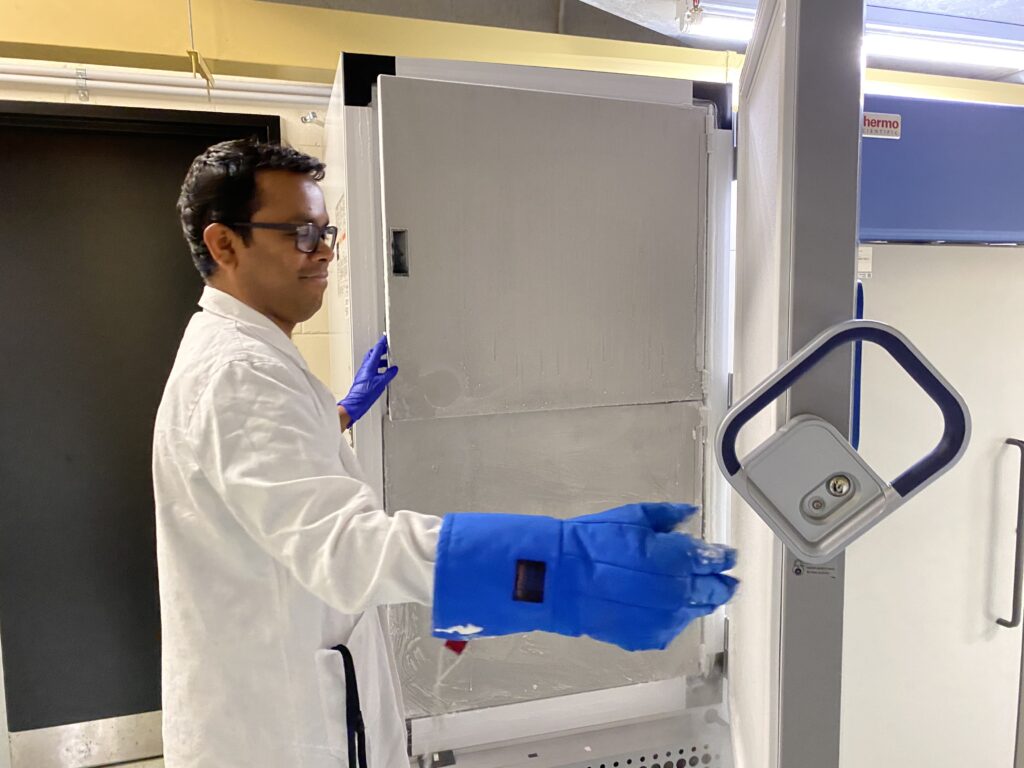17 May 2023 – Research Update
Close to 450 biospecimens spanning 15 years of brain tumour patients are being shared by Charlie Teo Foundation’s Brain Tumour Biobank with Australian brain cancer researchers
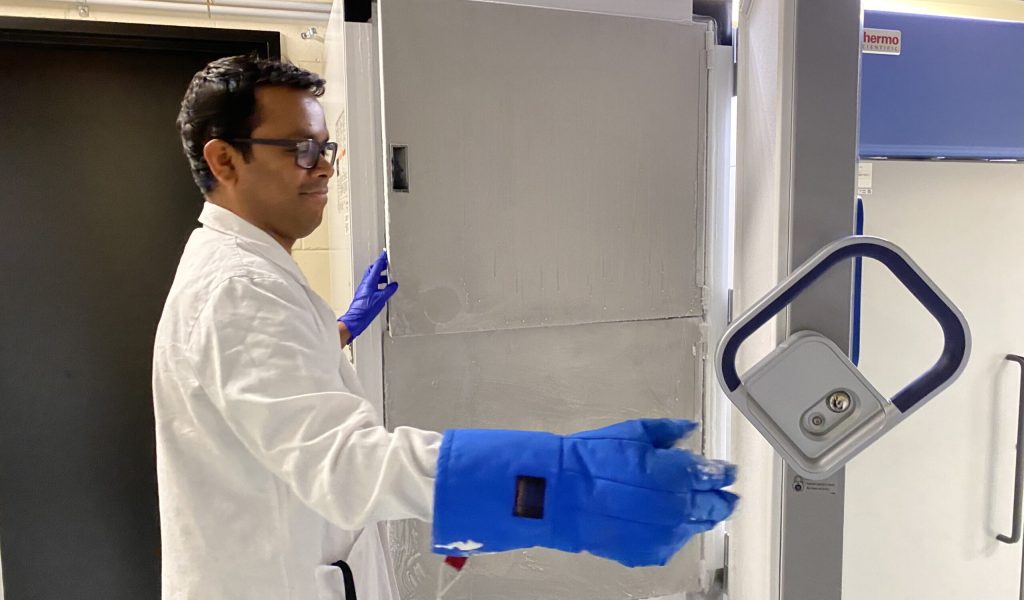
What is Charlie Teo Foundation's Brain Tumour Biobank (BTB)?
The BTB is a biobank. Biobanks typically collect, store and disseminate to researchers biospecimens such as tumour tissue, blood and associated de-identified clinical data from consenting patients. Specimens are collected from patients during surgery. Researchers with ethically approved projects can apply to access samples and associated de-identified data for research.
The scientific aim of the BTB is to produce and share high-quality, well-annotated, biological and clinical data that has the potential to drive further innovation and scientific breakthroughs.
“Charlie Teo Foundation's Brain Tumour Biobank is sharing crucial high-grade brain tumour material, enabling scientists to understand how these deadly tumours are programmed so we can finally develop new treatments.”
– Professor Jeff Holst, University of New South Wales – Sydney
Why is this an important resource to treat brain cancer?
Biospecimens in the BTB have been collected from brain tumour patients over the last 15 years. This makes it an incredibly important and unique resource for brain cancer research and tracking tumour progression.
Brain tumours range from benign (least aggressive) to cancer (most aggressive), with the most aggressive type, GBM, being notoriously difficult to treat. Over the past three decades, despite advancements in detection and treatment methods, the mortality rate associated with these types of brain cancers has shown no significant change.
The most aggressive form of brain cancer is currently treated using a multipronged approach that can involve surgery, radiotherapy and chemotherapy. Yet the long-term outlook and survival rates of people with such cancers remains very poor (median survival of 14.6 months and a five-year survival rate of only 6.8%).
Current efforts in brain cancer research are to tailor treatments to the individual’s brain cancer however this can only be successful if there are reliable ways of identifying what is different about an individual’s brain cancer and adapting treatment to that difference.
To identify ways to personalise treatment and ensure patients receive therapies that will benefit them the most and make a significant difference to their chances of beating brain cancer, procurement of high-quality samples is vital.
Brain cancer research with real-world (translational) impacts relies on the use of high-quality samples. These translational impacts include the 1) identification of risk, 2) early detection, 3) sub-classification (including prognostics and predictive biomarkers), and 4) identification of new drug targets and treatments across a broad range of research fields, including molecular and cell biology, cancer genetics, clinical research and biomarker research.
The BTB has collected, processed, stored, retrieved and disseminated high-quality samples and information for research projects following informed consent from participants diagnosed with brain tumours.
Together, the collection and processing of these samples, with the data made available for use to the research community, not only increases the utility of these samples but also increases research information that can be obtained, increases the rate of research and accelerates research findings to benefit brain cancer patients.
“Brain cancer banks with paediatric biospecimens and high-quality data provide an invaluable resource to help researchers identify novel therapies for childhood brain cancer.”
– Associate Professor Raelene Endersby, Telethon Kids Institute - Perth
How are BTB operations supported?
Biobank operations are funded by the Charlie Teo Foundation. In other words, the Charlie Teo Foundation is the research sponsor. This includes operating costs such as infrastructure, consumables, information technology, maintenance etc.
Do researchers pay to access biospecimens from the BTB?
No. Biospecimens in the BTB are made available to researchers free of charge. Use of samples must be for scientifically valid and ethically approved brain cancer research projects.
The only potential costs associated with access to biospecimens may be if courier transport is required. In most cases, the option for physical collection in person is available.
BTB was established under the Charlie Teo Foundation’s research theme of More Data – to produce and share high-quality, well-annotated, biological and clinical data that has the potential to drive further innovation and scientific breakthroughs. The concept of ‘Open Access’ underpins the biobanking model, where there are no financial barriers to accessing materials.
Charlie Teo Foundation’s More Data theme centres around encouraging the breaking down of research silos, and the sharing of ideas, data and information. Research findings and data where possible should be made openly available for others in the field to learn from and build upon. We believe this will increase the odds of finding a cure for brain cancer.
How is the BTB monitored?
The BTB is scientifically and ethically approved by independent, human research ethics committee (HREC), Bellberry Limited, in accordance with the guidelines of the National Health and Medical Research Council of Australia’s National Statement on Ethical Conduct in Human Research (National Guidelines). Research progress is reported and ethically approved annually. A routine site monitoring audit was recently completed under the National Guidelines.
BTB is also a NSW Health Pathology certified biobank, meaning its processes and procedures are certified in line with international best practices including ISO 20387 – Biotechnology – Biobanking – General Requirement for biobanking.
BTB is not currently recruiting new participants or collecting new specimens, with the governance protocol amended and ethically approved to reflect this. The BTB continues to process, store, retrieve and disseminate high-quality samples and information for research projects.
Biobanking processes
The BTB is open and transparent about biobank processes including consenting and material handling procedures, quality assurance measures and processes for accessing materials. See below for a summary of the research projects where biospecimens have been approved or accessed to date from the BTB. For more information refer to the publication in the Open Journal of BioResources.
Brain Cancer Research Projects Supported by the BTB
1. Garvan Institute of Medical Research
Brain Cancer Seq.
Key Aim: Large-scale study of high-grade brain tumours to identify the intra-tumoural cellular heterogeneity using the single-cell sequencing technique.
This research project generated data from approximately 700,000 cells, establishing the largest known resource of its kind. Novel and robust machine-learning techniques were devised to effectively analyse the microenvironment of brain tumours. This enabled the identification of intra- and inter-tumoural variations, illuminating the intricate heterogeneity inherent in diffuse glioma.
Brain tumour samples: Up to 100 adult-type brain tumour samples including astrocytoma, oligodendroglioma and GBM. Find out more
2. University of New South Wales
Understanding the relationship of cytomegalovirus (CMV) infection to immune surveillance within the GBM tumour microenvironment
Key Aim: To assess the prevalence of CMV within a wide Australian GBM patient population and to identify GBM patients with a favourable immune phenotype towards targeting CMV as an immune therapeutic strategy.
Brain cancer samples: 34 GBM and 1 diffuse astrocytoma brain tumour sample.
3. University of New South Wales
Developing a metabolic roadmap to discover novel therapeutic avenues to starve GBM
Key Aim: To undertake metabolic profiling of GBM patient samples, to understand how they use and distribute their essential nutrients. This will develop a metabolic roadmap which can be combined with genetic and transcriptomic information being developed through the Garvan Institute of Medical Research. Ultimately, success in this project will enable us to understand how GBM tumours are metabolically programmed, providing critical data for future studies developing new therapies targeting these metabolic vulnerabilities.
Brain cancer samples: 13 GBM brain tumour samples.
4. University of Newcastle
Multi-modal identification of actionable targets against diffuse midline glioma (DMG) – making a pipedream a reality
Key Aim: To create a multimodal pipeline capable of identifying actionable drug targets or treatment strategies to treat diffuse midline glioma. Tumour tissue, tumour cells and plasma will be subjected to TSO500 NGS sequencing, with tissue and cells subjected to proteomic and phosphoproteomic profiling, and drug screening in near real-time.
The project has a particular focus on the protein features of poorly survived brain cancers. Anti-cancer therapies can be designed (or repurposed) to target these features as a strategy to reduce or halt tumour growth, aiming to prolong survival.
Brain tumour samples: 17 childhood brain tumour samples.
5. Garvan Institute of Medical Research
Identifying therapeutic targets from cell state models in adult-type diffuse gliomas
Key Aim: To identify how the specific genomics drivers of underlying adult diffuse gliomas cell states can be targeted with new therapies.
This project builds on the Brain Cancer Seq. initial project. The team continues the development of the computational methods required to not only identify cell states but the specific genomic drivers that underpin the development, progression and treatment resistance of various subtypes of adult diffuse gliomas i.e., astrocytoma, oligodendroglioma and glioblastoma. A particular focus is to unravel the genomic landscape changes during the disease progression i.e., the progression from i) lower grade to higher grade gliomas and ii) primary GBMs to recurrent GBMs.
To enhance their study, the researchers obtained additional samples to create and analyse 2D and 3D models. These models will serve two purposes: firstly, to validate the functional aspects of the genetic targets identified in the cell state study, and secondly, to conduct high throughput drug screening.
Brain tumour samples: Up to 170 adult brain tumour samples predominantly diffuse gliomas. Find out more
6. Children's Medical Research Institute, Westmead
Deconvoluting the bulk proteomics signal according to the cell types in High-Grade Gliomas
Key Aim: To explore the proteomic signature in different types of brain tumours and to correlate this with sc-RNA-seq classification to better understand the heterogeneity of the tumours and deconvolute the bulk proteomics signal according to the cell types.
Brain tumour samples: Up to 110 brain tumour samples.
